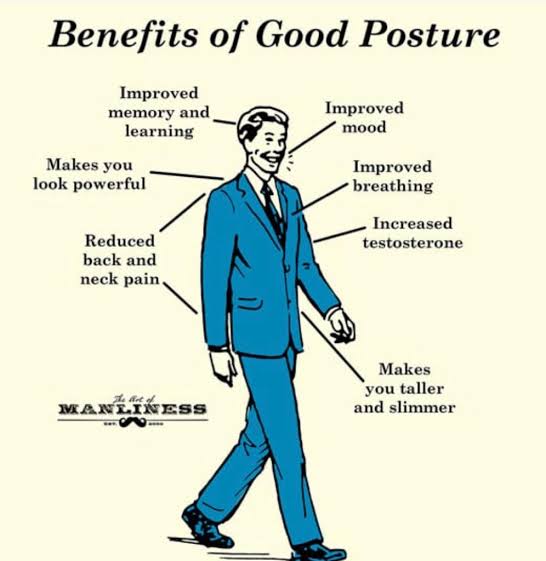The Importance of Good Posture : A Medical Professional’s perspective
Introduction:
In today's fast-paced world, where most of our activities involve sitting and hunching over electronic devices, maintaining good posture often takes a backseat. However, as medical professionals, we understand the significant impact that poor posture can have on our overall health and well-being. In this blog, we will explore the importance of good posture from a medical perspective, highlighting its benefits, common postural issues, and practical tips to improve and maintain proper alignment. Let's dive in!
Understanding Posture:
Posture refers to the alignment and positioning of the body's various parts, including the spine, muscles, and joints, in relation to one another. Maintaining good posture involves keeping these structures in their optimal positions to reduce stress and strain on the body.
Benefits of Good Posture:
Spinal Health:
Proper posture ensures that the spine maintains its natural curves, preventing excessive stress on the vertebrae, discs, and surrounding tissues. This reduces the risk of spinal conditions such as herniated discs, degenerative disc disease, and chronic back pain.
Musculoskeletal Health:
Good posture promotes balanced muscle activity and alignment, which helps prevent musculoskeletal imbalances, joint misalignment, and overuse injuries. It also improves muscle efficiency, reducing fatigue and enhancing physical performance.
Breathing and Circulation:
Correct alignment of the chest and ribcage allows for unrestricted lung expansion and optimal oxygen intake. It also facilitates efficient blood circulation, enhancing the delivery of nutrients and oxygen throughout the body.
Digestion:
Slouched posture can compress the abdominal organs, leading to digestive issues like acid reflux, constipation, and bloating. Maintaining an upright posture during and after meals promotes healthy digestion and prevents discomfort.
Common Postural Issues:
Forward Head Posture:
This occurs when the head juts forward from its ideal position, often a result of prolonged computer or phone use. It strains the neck and upper back muscles, contributing to tension headaches, neck pain, and reduced range of motion.
Rounded Shoulders:
Rounded shoulders involve a forward rounding of the upper back and a protrusion of the shoulders. It weakens the upper back muscles, tightens the chest muscles, and can lead to shoulder impingement and postural abnormalities.
Kyphosis:
Kyphosis refers to an excessive outward curvature of the thoracic spine, causing a hunched or "humpback" appearance. It commonly occurs in older adults but can also develop due to poor posture, weak back muscles, or certain medical conditions.
Improving and Maintaining Good Posture:
Ergonomic Awareness:
Ensure that your workspace is ergonomically designed. Position your computer monitor at eye level, maintain a 90-degree angle at the elbows and knees, and use an ergonomic chair with adequate lumbar support.
Regular Stretching and Strengthening Exercises:
Incorporate exercises that strengthen the core muscles, back extensors, and neck muscles while stretching the chest and hip flexors. Yoga and Pilates can also improve posture through their focus on body alignment and core strength.
Mindful Sitting and Standing:
While sitting, keep your feet flat on the floor, knees bent at a 90-degree angle, and back supported against the chair. Avoid slumping or crossing your legs for extended periods. When standing, distribute your weight evenly on both feet, engage your core, and avoid excessive arching or rounding of the back.
Take Frequent Breaks:
Avoid prolonged sitting or standing by taking breaks every 30 minutes. Use this time to stretch, walk, or perform simple exercises to reduce muscle fatigue and promote circulation.
Conclusion:
As medical professionals, we understand that good posture is not merely a matter of aesthetics but a crucial aspect of our overall health. By maintaining proper alignment, we can reduce the risk of musculoskeletal disorders, alleviate pain, and enhance our physical well-being. Incorporate the practical tips discussed in this blog into your daily routine to improve and maintain good posture. Remember, small changes can make a significant difference in the long run. Prioritize your posture, and reap the benefits of a healthier and more comfortable life!










Comments
Post a Comment